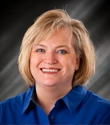Jan 08, 2020
Informal Caregiving and Technology in Rural America
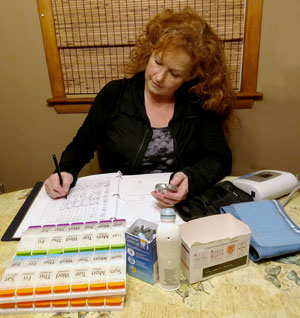
Maria Waters can only talk for a little while; it's her night to shower her mother. She and another sibling take turns caregiving for her parents. Her parents have recently returned to their home after a fire had forced them out and they moved in with Waters and her family.
For Waters, the slide into caregiving was gradual. Her mother's Alzheimer's symptoms were noticeable for about two years before she started having other issues. Her father was healthy but was forced to retire from a job he loved and gave him purpose at 72. After that he fell and broke his hip. He quit eating and fell into a deep depression.
They had home health for a while but it didn't work out, so Waters and her sister used connections they had through social media to find their own paid caregivers to attend to their parents when they couldn't be there. They had to; the stress of caring for their parents while working full-time and caring for their own families nearly broke them. "It almost got me. I couldn't sleep. I couldn't figure out how to put all the puzzle pieces together." Waters, who is a nurse, doesn't understand how people without a medical background do it. She tries to relieve stress by going to the gym or getting a massage to release the tension. "I would go to the gym and burn off energy and then go take care of Mom and Dad."
It almost got me. I couldn't sleep. I couldn't figure out how to put all the puzzle pieces together.
As people are living longer and trying to find solutions to delay the expense of long-term care or nursing facilities, family members, including adult children, are increasingly becoming informal, unpaid caregivers. According to the Pew Research Center, about 23% of adults 45 to 65 in the United States are caring for a family member. While an earlier study found that a person's sex was not a factor in caregiving, it did find that caregivers were more likely to be married and working full-time, like Waters. It also found that caregivers experienced changes in their health (both positive and negative) or a health crisis at a greater rate than non-caregivers.
Technology as a Potential Caregiver Solution
As early as 2013, another Pew Research Center study found that caregivers were more likely to use the internet to access information on health conditions and to look up diagnoses than their non-caregiver counterparts.
In April 2014, the National Alliance for Caregiving brought together experts as well as a varied group of stakeholders to look at how technology advances could assist family caregivers. They produced a report entitled Catalyzing Technology to Support Family Caregiving.
The report identified three ideas for which participants showed significant interest:
- "An 'Intelligent Family Care Assistant' to help with day-to-day caregiving by helping to coordinate the family's tasks in the context of the family's other activities."
- "'Wearable technologies' — devices worn on or placed in the body, with sensors and/or human interfaces — to help monitor a person's health and overall condition."
- "Technologies that provide better connections between family caregivers and health professionals, enabling them to work more effectively as a team in providing care."
In order to optimize new technology, participants identified strategies such as better defining the concept of caregiving, adding to and collecting more data, and launching a national conversation regarding family caregiving. Participants also mentioned the need to create a business case for development of caregiver technologies.
A 2016 AARP study [no longer available online] found that "71% of caregivers are interested in technology, but only 7% were currently using it to assist with their caregiving duties." The study also noted 59% expressed an interest in using a currently available technology out of a list shared with them.
The AARP study also found that caregivers most frequently used technology for such things as organizing tasks and medication management.
Just recently, in August 2018, a policy brief entitled Perspectives on Rural Caregiving Challenges and Interventions from the University of Minnesota Rural Health Research Center (UMRHRC) found through key informant interviews that technology could be a potential solution.
The Gap between Availability and Use
Technology has exploded since that 2014 National Alliance for Caregiving report, and caregivers have an ever-increasing number of technological solutions to help them provide care. However, as the caregivers interviewed for the 2018 UMRHRC brief pointed out, financial barriers to technological tools and lack of bandwidth or internet access may impede their use, especially in rural communities.
Despite caregiver interest in technology, it is difficult to find innovative models that integrate technology into rural caregiving beyond telehealth applications and telephonic support. In fact, in 2018, when the New York State Department of Health held a crowdsourcing Aging Innovation Challenge to "generate innovative solutions to assist older adults and their caregivers," the co-winners, teams from Syracuse University and Corning Community College, produced devices that, while helpful, were new adaptations of lift chairs and gripping devices, respectively.
In addition, research on helpful caregiver technology doesn't delve much beyond telemedicine, and many caregivers are left to find helpful solutions by themselves or by accident. Even a caregiver institute contacted for this article declined to be interviewed, writing that they were only beginning to study this issue themselves.
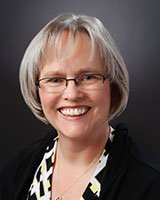
Mary DeVany, Associate Director of the Great Plains Telehealth Resource and Assistance Center, highlighted why demonstration projects might prove difficult and why more organizations and funders may not have taken them on: "One reason might be because of the wide range of variables around such a project. These could include the age of the infrastructure in the home or the connectivity aspects of the community in which they live; the comfort level of those using the technology, as many caregivers may be elderly in rural communities; and willingness of their provider to support them with or introduce them to this possibility." In addition, DeVany pondered that the vast variety of apps, services, and programs that are available at a consumer level may also be a hindrance to rural health organizations creating technology-based healthcare solutions for informal caregivers.
DeVany pointed to two other potential reasons for the gap in technology uptake — the technology itself and a lack of encouragement from providers.
"Often the technology requires or works best on broadband connectivity, which is not fully available in our rural areas. While this is improving, it is still an issue, especially for frontier areas. If cellular is an option, apps may take up data on the individual's phone and, if caregivers don't have unlimited data plans, their ability to consistently use the app or services throughout the entire month could be impacted," said DeVany.
"Additionally, the ability to share that data with their provider is still challenging. First, a person needs to have an app that allows for interoperability with the EMR or at least the ability to somehow share relative information and data in a printed or PDF format. If it is interoperable, is it just dumping the data to be saved in the EMR? The provider is likely going to be leery about that option as it will be too much meaningless data to store and evaluate without important markers for each patient. The technology needs to allow for that data to be structured in a manner that a provider can easily visualize in order to be alert to any concerns."
The use of some technology may also increase the burden on caregivers in the beginning, while assisting in the long run. In fact, as Waters found out by trying to monitor her mother's glucose through an app that was too difficult for her mother to operate, technology must be chosen carefully and with the user in mind.
Amy Goyer, AARP's family caregiving expert, in an article for AARP (no longer available online), named six things to keep in mind when considering tech tools for caregiving: ease of use, comfort level, cross-platform issues, security, customer service, and the user.
Waters, who occasionally travels out of the country, and her sister have found solutions that work for their family. They are partial to using a free app for text messaging on their smart phones to coordinate care responsibilities and check in with each other. The app allows her to be abroad and still keep tabs on what is going on at home easily and cost-effectively.
Even if they say they don't have anything to recommend, keep asking and encourage others to do the same.
DeVany said that one way caregivers can learn about potential technology solutions is to keep asking their providers about options. The providers will be able to share what they have available for caregivers to utilize, or at least what they might recommend. It also encourages providers to become more informed and open to technology-based supports for caregivers and their patients. "Even if they say they don't have anything to recommend, keep asking and encourage others to do the same. Eventually, providers may make a move to support this option for their patients," said DeVany. "Caregivers can also reach out to various national caregiving associations or organizations focusing on aging or senior services to ask what others are doing. Then they can share ideas they find helpful with their own provider."
The Telehealth Resource Centers around the country continue to look at options for informal caregivers, according to DeVany. She pointed to a fact sheet on virtual healthcare (no longer available online) as a resource targeted for the public and indicated they are looking to develop others over the next year.
Policy Recommendations May Spur Research and Growth
The August 2019 publication Supportive Services and Caregiving for Rural Adults: Policy Brief and Recommendations to the Secretary from the National Advisory Committee on Rural Health and Human Services (NACRHHS) pointed to "the nearly 44 million family and friends who provide the vast majority of supportive services and long-term care in the United States, [and who] provide nearly $500 billion annually in unpaid care for an older adult or individual who is disabled." The policy brief identifies a lack of resources for training caregivers, less availability of respite services, and the reluctance of rural caregivers to ask for help as compounding the burden of caregiving in rural areas. The brief continues, "This creates conditions where the caregiver may be unable or unwilling to access help beyond their scope of care when it is necessary and isolates them from their own social connections because they cannot leave the care recipient on their own."
NACRHHS Recommendations on Supportive Services and Caregiving
The 2019 NACRHHS report Supportive Services and Caregiving for Rural Adults: Policy Brief and Recommendations to the Secretary described four major policy recommendations to advance rural caregiving and support older adults. They include:
- "The Committee recommends the Secretary create a comprehensive resource on the aging and long-term services and supports available to older adults in rural areas."
- "The Committee recommends the Secretary continue to expand flexibility in Medicare telehealth billing and provide a comprehensive resource of telehealth offerings in rural areas."
- "The Committee recommends the Secretary ensure the promotion and encouragement of age-friendly concepts within rural health grant programs."
- "The Committee recommends the Secretary explore the entry of Medicare Advantage Dual-Eligible Special Needs Plans into rural areas, identify potential barriers, and work with states to adopt policies that encourage or expand the reach of these plans to rural beneficiaries."
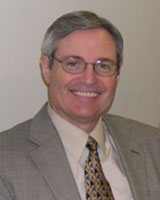
Executive secretary of the NACRHHS, Paul Moore, DPh, explained that "the Committee concluded that health and human service programs should be designed to allow rural older adults to age in place in a manner that is available, accessible, and acceptable to the needs of each individual. The Committee also suggested that limitations and challenges in accessing certain services such as information barriers, lack of transportation, and social isolation could be addressed through greater use of technology."
He continued, "At a minimum the brief will make policymakers, rural service providers, and other stakeholders aware of nationally available resources and the difficulty caregivers and individuals needing care have in finding where these resources exist."
The Committee also suggested that limitations and challenges in accessing certain services such as information barriers, lack of transportation, and social isolation could be addressed through greater use of technology.
Adopting these policy changes may help spur solutions to caregiving issues that informal caregivers such as Waters and her siblings face every day.
A Rural Technology Model with Caregiver Implications
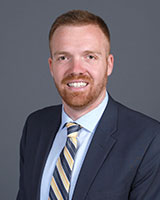
One of the models that focuses on the needs of the caregiver, while providing high-quality technology-assisted care to the recipient, is eCare Senior Care, a service of the rural health system Avera Health. It holds promise for adapting a successful commercial technology application to create home-based caregiver solutions. Josh Hofmeyer, Avera eCare Senior Care Officer, explained that Avera started providing e-health solutions in rural long-term care facilities in 2012. eCare Senior Care provided rural long-term care facilities with 24-hour access to a team of physicians, geriatric specialists, pharmacists, registered nurses, and other supports. Hofmeyer detailed that, through a business-to-business subscription model, they were able to offer a menu of unlimited services including behavioral health access, pharmacy, care planning, and care transitions. By allowing access to care in real time, the goal was to cut back on readmission and reduce the total cost of care. The results were substantial: 90% of patients could be treated in place and facilities experienced a 62% reduction in transfers. Hofmeyer described the eCare Senior Care model as "everybody wins": "The facility wins, the payer wins, the family wins, and the patient wins."
The facility wins, the payer wins, the family wins, and the patient wins.
In 2015, Avera extended its services into assisted living and senior housing programs, with similar results. Taking care of issues such as medications, fall assessments, and skin problems resulted in treatment in place 95% of the time. Universal workers and informal caregivers in those facilities felt more confident and supported, and the on-call nursing staff experienced fewer calls. One universal worker even decided to pursue a nursing career due to the positive interactions and support she had from the program.
According to Hofmeyer, another key to success for the product is the portability of the wireless cart and utilization of a phone and peripherals that allow for treatment in a person's room or in any other space, such as bringing the cart to examine a patient who fell before moving them.
Avera is currently studying a model for use in people's homes in order to support home health. Hofmeyer said that Avera employs a robust innovation cycle and thoroughly tests new models. If a home health model proves effective, he speculated that it may open the door to a model geared toward informal caregivers, but it would also be vetted through the same innovation cycle and extensive testing that other models go through.
What Does the Future Hold?
While rural home-based technology models for informal caregivers may not be prevalent, the studies point to caregiver readiness to use them to help lighten the important work they do. And that work is only going to increase.
Dr. Julie Smith Hinders studied the Unmet Support Needs of Informal Caregivers of Older Adults for her recent dissertation because, in her words, "research has not kept pace with the changing healthcare landscape and the shift to more home-based services." She references the silver tsunami, where the U.S. Census Bureau estimates the 65 or older population to nearly double by the year 2050. And, she writes, "despite the recognition of the importance of informal caregivers, past research has often focused on the needs of the care recipient rather than the caregiver. Caregiver research has often focused on burden of care issues or has considered caregiver needs from the perspective of a third party rather than the caregivers themselves."
As researchers begin to peel back the true needs of rural informal caregivers along with policy changes and financial incentives that could converge to spur innovation, more technology models such as Avera's eCare Senior Care are bound to emerge and provide solutions for these important lay healthcare providers. Smith Hinders' suggestion of a change in focus to the needs of the caregiver from the perspective of the caregiver may be the key.
And for her part, Waters could not be clearer about what she needs: "All I want is to keep my aging parents in their home and safe, the way they want it."
These programs in RHIhub's Rural Health Models & Innovations provide supports that may be helpful to rural informal caregivers:
- Project ENABLE (Educate, Nurture, Advise, Before Life Ends) — Provides palliative care to patients with advanced cancer or heart failure and provides support to their caregivers.
- Project C.A.R.E. — Project C.A.R.E. (Caregiver Alternatives to Running on Empty) was created to meet the needs of rural caregivers of those with Alzheimer's disease across North Carolina.

